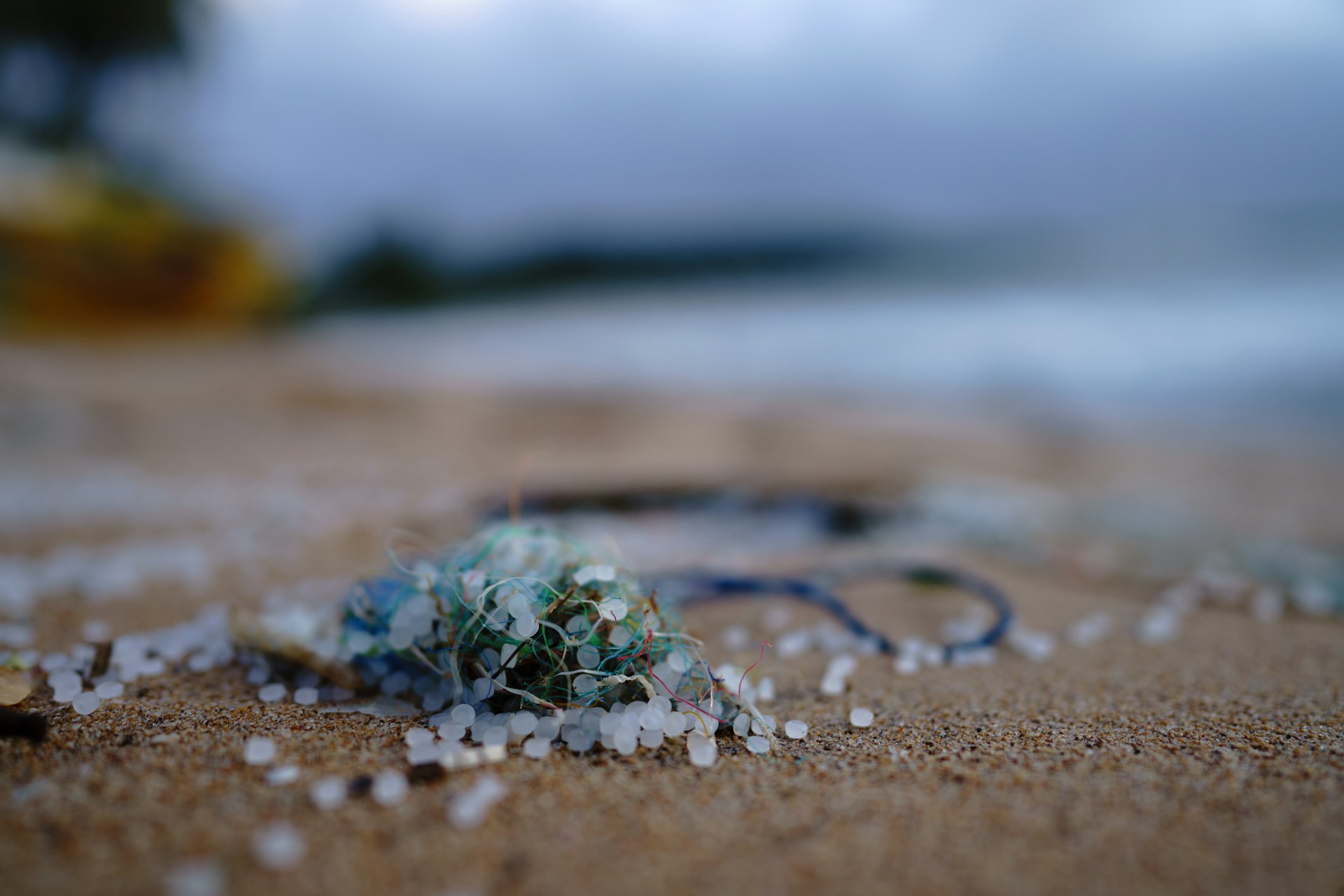By Michael Richardson, Leiden University; Meiru Wang, Leiden University; The Conversation

Microplastics are also increasingly being found throughout the human body. (File Photo: Sören Funk/Unsplash)
Small plastic particles are everywhere: in the soil where our food is grown, in the water we drink and in the air we breathe. They got there from the plastic we throw away, which ends up in landfill sites, rivers and seas. There the plastic waste slowly breaks down, releasing tiny particles called microplastics and even tinier nanoplastics into the environment.
Microplastics are also increasingly being found throughout the human body. We are not sure how they got there, though there are three probable routes. We may ingest microplastics when we eat and drink, or breathe them into our lungs, or absorb them through our skin. Another route has recently been suggested, whereby microplastics get up our noses and from there into our brains.
For a long time, it was thought that the human brain existed in splendid isolation from the rest of the body. The so-called blood-brain barrier, a special layer of cells, protects the brain from all manner of pathogens and harmful substances. However, we now know that the blood-brain barrier can be breached because small plastic particles have been found in the human brain.
New research has suggested that the blood-brain barrier has at least one vulnerable spot where microplastics may be able to get into the brain. This potential entry point was suggested by researchers at the Freie Universität Berlin and the University of São Paulo. It is in the nose, where there are special nerves, the olfactory nerves, that detect smells.
The olfactory nerves run from the inside of the nose, through the skull, and then directly into part of the brain called the olfactory bulb. The researchers suggest that microparticles breathed into the nose may somehow get transported along the olfactory nerves and into the brain.
The researchers came to their conclusions by analysing tissue samples from residents of São Paulo who had died and undergone routine coroners’ autopsies. They removed the olfactory bulbs from these brains and analysed them using a variety of techniques.
Eight out of the 15 brains studied had microplastics in their olfactory bulbs. However, these eight samples had only 16 microplastic particles between them, which is perhaps some comfort.
Those 16 plastic particles included fragments, spheres and fibres, and were made of polypropylene, nylon and other plastics. Some of the fibres could have come from clothing. This makes sense because laundering clothes made from synthetic fibres is a significant source of microplastics in the environment.
Some of our small plastic particles are missing
The new study is just one of many that has reported the presence of small plastic particles in the human body. Most of these studies are about microplastics, which are particles up to five millimetres in size. Very few studies have looked for nanoplastics in the human body.
Nanoplastics are less than one-thousandth of a millimetre in size – so tiny that it is difficult to detect them without special equipment, and few scientists have easy access to this equipment.
The reason nanoplastics are important is that, unlike microplastics, they are well-documented to be harmful to living cells. This is because nanoplastics are small enough to get inside cells. Once inside, they can kill the cell.
Nanoplastics have been shown to kill cells in animal embryos. This can lead to birth defects in animals if the embryo is exposed to a high dose of nanoparticles.
Fortunately, there is no evidence that humans have suffered any great increase in birth defects in recent years. Maybe the placenta is able to stop microplastics and nanoplastics from reaching the foetus.
We need to know much more about the presence of microplastics – and especially nanoplastics – in the human body. And we need to know how they get there in the first place.
This makes the new Berlin-São Paulo study so interesting. It suggests a potential entry point, from the nose into the brain. This leaves us with the question: what potential risks are posed to our health by microplastics and nanoplastics? The jury is out, but perhaps feeling a little more nervous than before.![]()
Michael Richardson, Professor of Animal Development, Leiden University and Meiru Wang, Postdoctoral Researcher, Developmental Biology, Molecular Biology and Nanotoxicology, Leiden University
This article is republished from The Conversation under a Creative Commons license. Read the original article.





















